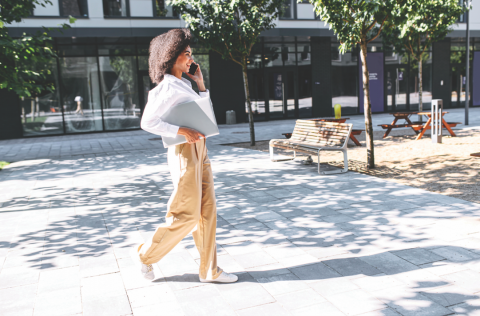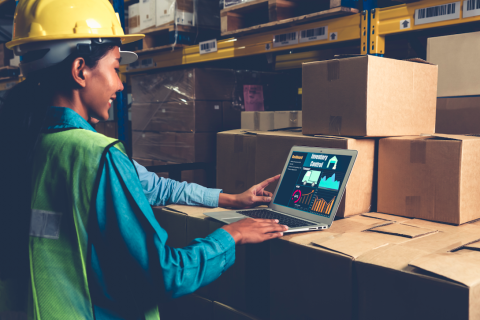Business Day Commercial Property
I’m Buying What She’s Having
Flexible, focused and changing fast, modern retail is undergoing an exciting metamorphosis. At a recent South African Council of Shopping Centre Congress of global retailers in Cape Town, trends pointed towards a global retail sector where connecting with a younger, modern shopper who craves an experience makes all the difference.
Customer-centric
Customers expect to interact across all channels, on their terms. Embracing digital transformation means retailers meeting their customers where they are at, with what they want. McorpCX president Michael Hinshaw says businesses should make decisions through their customers’ eyes, yet 11 per cent of business decisions are made without customer input.
Hinshaw’s retail research shows:
91 per cent of clients are more likely to shop if a retailer remembers them
79 per cent believe a retailer should actively show they understand them
70 per cent say understanding their needs drives loyalty
80 per cent are likely to buy if offered personalised experiences.
Integrated shopping
Retail futurist Doug Stephens says that from online shopping to bricks and mortar, the concept of what a store is, how consumers shop inside, and what the economic revenue model is, is being profoundly reinvented.
The physical store remains an important element of researching and purchasing. But, consumers are increasingly researching online, then making a final purchase in-store. Stephens says consumers want great experiences.
His advice:
Create stories or experiences: an experience less about products, more about productions. Less about inventory, more about inspiration. Less about commerce, more about a community that reflects their values.
Personalise: retailing and manufacturing less focused on mass production, and rather embracing the age of me. Take Nike’s hyper-personalisation where customers can design their own shoes. At Nike’s flagship Nike NYC store, a customer scans a shoe barcode via their phone camera to access what’s available in their size and preferred colour.
Surprise: great brands engineer great surprises. They should be unusual.
Repeatability: a store should be able to repeat an experience time and again.
Behavioural intelligence
South African company Fatti uses use Wi-Fi to record and monitor behavioural insights and real-time shopper intelligence in various shopping malls. CEO Adrian Maguire says retail-smart malls use aggregated data to make informed decisions that better serve their customers and improve the user experience. The challenge is that no two shopping centres have the same customer behaviour.
Aggregated data also reflects how turnover and customer entrance profiling on, say, a weekday, is different to a Saturday. Data-driven decisions are the clincher. “Landlords, tenants and marketing departments keep saying that the retail market is tough, but many are still making the same decisions and not changing how they do things to meet an evolving consumer,” says Maguire.
Shopper engagement
John Ryan, stores editor at Retail Week, says shopper engagement is about taking the expected and putting it into an unexpected retail context. “Louis Vuitton is probably the leader of doing retail in an alternative way,” he says. “At its New York pop-up store last July, everything was painted bright green from the brick exterior walls to a pavement mailbox and bicycle leaning outside.”
Technology has created staff-free stores. Swedish company Wheelys launched a staff-free prototype in Shanghai a few years ago, where doors open via a smartphone app. Tech start-up BingoBox partnered with French supermarket group Auchan to offer something similar in China.
Amazon Go opened its first cashless convenience store in Seattle in January 2018, where customers scan an Amazon smartphone app to purchase items. Amazon’s 12th US Amazon Go opened last May at Brookfield Place in New York. Those shoppers had an additional cash option where an employee performs a store checkout on a mobile device.
A traditional concept such as a bookstore might just need a new approach. At Duoyun Books in Shanghai Tower, 60 000 books are available in 2 229m2of space, 52 floors above ground. Proving that you can create new from old if you do it differently.
My experience
Modern shopping is about: intention, social, aspiration, entertainment, and discovery.
Lara Marrero is principal and strategy director at Gensler, the world’s largest design firm, responsible for incredible interiors in many premier retail addresses. These include six international Starbucks Reserve Roastery stores, the Adidas New York City concept store, and the redesign of Saks Fifth Avenue Flagship store in New York.
Marrero says it’s about navigating and activation. “We’re moving into the age of belonging: consumers want to be part of something bigger. It’s about partnership, connection and bringing people together in shared spaces.”
Consumers benchmark their experiences via their phones. “Remember that a consumer is a person. Today’s consumers take their best experience of any situation and apply it as a benchmark for their next one. They take to Instagram or Facebook to express how they feel about retail. They don’t even need words — emojis can do the trick.”
Multispaces
The way people work and live is changing. In retail, single-use spaces are obsolete. Modern consumers do different things simultaneously — checking emails or ordering food online while working.
Social spaces cannot be ignored by retail developers and designers. “Make sure you’re creating retail spaces where people can come together and chat,” says Marrero. “Consumer in-between-time isn’t wasted time.”
Tech also matters — in service to the customer journey, or to help people in sales areas to connect better with their
customers — in the best path to customer conversion.
Ryan says modern shoppers want a reason to spend their money. Stephens says digital is only an avenue for growth: rather than making the sale, stores need to deliver an experience that supports the brand. Marrero concludes that modern retail is about workstyle meets lifestyle and toggling between the two — developers need to design urban environments to support how people act. “It is no longer: if you build it, they will come,” says Marrero. “Now it is: if you constantly create ways of keeping interest, they will come.”






 Sign-up and receive the Business Media MAGS newsletter OR SA Mining newsletter straight to your inbox.
Sign-up and receive the Business Media MAGS newsletter OR SA Mining newsletter straight to your inbox.